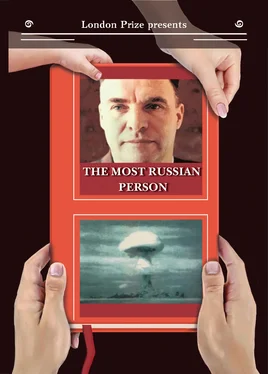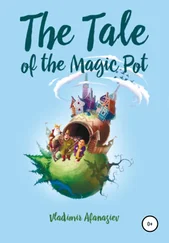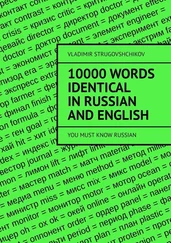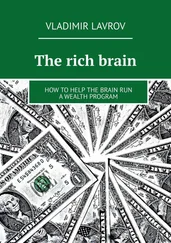So it turns out that Dollezhal’s today "… a century that lasts longer than a century?”
“It turns out that way. His century is more than a hundred years.
Now it has become fashionable to call scientists “fathers”. Who the father of nuclear bomb is, who of hydrogen is, who the father of thermonuclear weapon is.
So Dollezhal is also the “father” of the first Soviet nuclear reactor designed under his guidance.”
I take the liberty to interrupt the story of Ivan Nikiforovich with my own necessary additions about Nikolay Antonovich Dollezhal. From the dossier:
Twice Hero of Socialist Labor.
Winner of the Lenin Prize.
Winner of five State Prizes.
Academician, theorist and practitioner. Engineer.
Constructor.
Mechanical engineer. Rocket engineer.
In an interview, Nikolay Antonovich told an amusing story. After the explosion of the atomic bomb by the Americans in Japan, a book by Smith “Atomic Energy for Military Targets” was published. In America itself and around the world the book was not a secret. It was marked as “classified” in the Soviet Union.
Naturally, either Kurchatov, or Alikhanov, and Dollezhal, and all the scientists involved in the Soviet atomic project had read the book. More carefully they had time to read. Dollezhal did not just read, he studied the drawings. He thought about them, studied them, tried on his own ideas to the Americans. His own engineering thought worked non-stop.
“Once,” writes Yaroslav Golovanov in the article “Nikolay Dollezhal – a Man and a Reactor”, published to the centenary of a scientist, “he was twirling a matchbox in his hand, put it on a small edge and immediately a long-awaited thought seemed to burn through: “Why do we need to make the reactor channels horizontal? What prevents them from being vertical? After all, it will be much easier to operate such a reactor!”
It was then that he told Kurchatov that he was ready to design a new reactor on vertical channels.
Igor Vasilyevich understood that Dollezhal's version was bold in theory, technically sound, engineeringly competent… But the American project, although more difficult to perform, but it already worked.
“We will build both!” Kurchatov delivered his verdict. He knew what they and Dollezhal were risking: not much, not enough – LIFE… Each version of the drawing, which the scientists understood perfectly well, could become an arrest warrant!
And another interesting moment from those topsecret times.
A department at the Institute of Chemical Engineering was created specifically for… spies. Well, naturally, witty person used a joke very carefully. The department where the reactor was being born was officially called the “Hydrosector”. The neutral name was conceived as a distraction. And it turned out to actually distract the attention of spies, that is, technical intelligence in favor of foreign countries.
And then. Sketchy reactor designs were delivered quickly. An elevator shaft for the vertical channels of the reactor were prepared. Testing of individual stages took place directly on the machines of the pilot production. They say, probably, for good reason, all top-secret ideas, projects, developments, were made in super-super-super-secret areas, factories or entire cities. Such was the “invention” of the KGB, which Beria was very proud of.
At such a secret enterprise in Chelyabinsk-40, our first industrial reactor was built to produce plutonium according to the Dollezhal project.
The reactor was launched on July 19, 1948.
A year later, on August 29, 1949, an atomic bomb was tested.
With this bomb, as Kurchatov admitted to Dollezhal, we got the result a year earlier than we had expected.
There was a solution to the next regular task – to make the atom work for peaceful purposes.
It was about the construction of nuclear power plants.
Kurchatov's phrase, addressed to any employee of his Center he met in the morning, was like this, “Are there any achievements?” And no matter what the answer was, Igor Vasilyevich cheerfully suggested, “Go ahead!” He said to Dollezhalu in satisfaction, “There is progress. And what about new considerations?” Nikolay Antonovich had some thoughts.
After some time, Dollezhal, together with his assistants and, first of all, with the like-minded and talented engineer Pyotr Ivanovich Aleschenkov, created a super reactor for those times: with 128 fuel elements that ensured the power of NPPs at 5000 kilowatts!
For the creation of this reactor Dollezhal became the winner of the Lenin Prize.
As time flew, science did not stand still.
Soon the “military atomic theme” was raised again. The American submarine “Nautilus” was, as everyone understood it, created not for easy walks in the depths of the oceans.
Six months before his death, in September 1952, Stalin, realizing the significance of this step of Americans as an affirmation of US domination in the world's oceans, managed to sign the decree on the construction in the USSR of research institute No. 8 (NII-8). It soon became known as NIIET – the research institute of power engineering. Nikolay Antonovich Dollezhal was appointed its director.
In Moscow in Malaya Krasnoselskaya Street there was a small territory on which a poor and small reinforcement plant was located. This was the “inheritance” Dollezhal received for NIIET, which meant that the institute had to be started from scratch.
And again, to build a reactor of enhanced power, large dimensions and – as a result – “sew” larger than in the first atomic projects, or rather, in their incarnations, the “clothes” of radiation protection.
For the ubiquitous spies, again there was a “telling of lie”: this time the smoke curtain of secrecy was the mythical “crystallizer” for “object 627”. And under this code (as witty persons of science used to joke) there could be, say, a workshop for filling siphons with sparkling water or production of “dry ice”, but in reality…
Well, it's like a joke: one short traditional Russian word of three letters is written on the fence, but there is firewood…
Only in 1958, the first Soviet nuclear submarine “Leninsky Komsomol” went out to sea. Captain II rank Leonid Osipenko was in charge of the first sea campaign of the submarine. A new era in the history of the Navy has begun.
In a word, the reactors built by Nikolay Antonovich Dollezhal began the rapid development of power engineering in the 70s. There appear The Beloyarsk NPP, Smolensk, Kursk, Leningrad, Ingalinsk, Chernobyl ones… This word “Chernobyl” has become the synonym of the blackest tragedy experienced by the scientist. In his book “At the Source of the Man-Made World” Dollezhal asserts that there was no atomic explosion at the Chernobyl nuclear power plant. There was a thermal explosion which had to be extinguished differently than people in panic began to do.
And he is absolutely certain that no responsibility of a scientist to the highest institution will ever exceed the responsibility of a scientist to his own conscience and duty.
There is no person engaged in the atom who would not think about this simple truth.
Didn’t Academician Andrey Dmitrievich Saharov speak and write about this?
Wasn’t it because Academician Alikhanov withdrew from participating in the development of a new generation of bombs, which, as they say among physicists, “the 16th group of Zeldovich” “calculated” in Arzamas?
But, probably, for thousands of years, the meaning of the ancient dictum remains accurate and true: “PARA BELLUM!” – “If you want peace, be ready for war.”
Читать дальше












